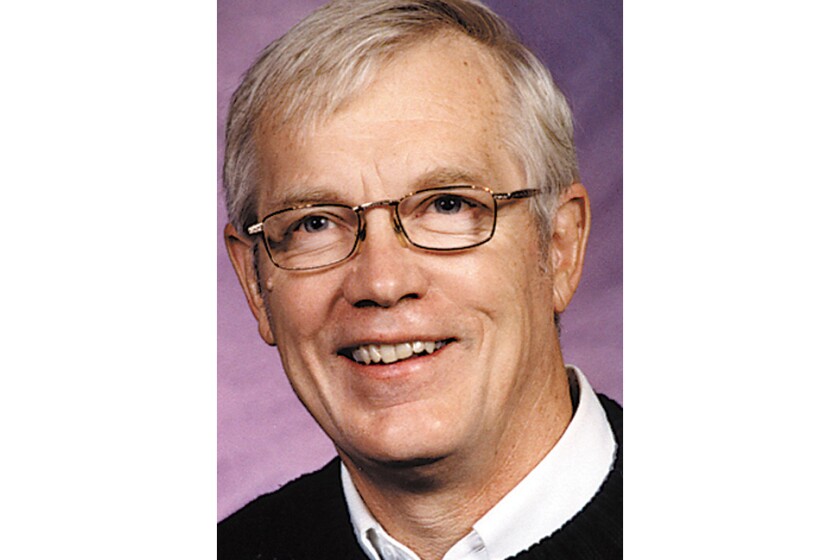In Glenn Singleton’s book, "Courageous Conversations About Race," he says on page 94 that all white people in America have known but seldom admit or may not even realize that “white is a culture.”
As a white person, I have grown up in this culture, and what I do and say is attributed to my white culture. It’s who I am, and it’s hard to change.
ADVERTISEMENT
This past year I have worked with teachers and students in the Republic of Georgia, teachers in Ukraine and Columbia, and a small group of students from Red Lake. What they say and do is attributed to their culture.
As much as I try to be part of their culture, it is challenging. Language, for example, is the most difficult. Fortunately, I know Spanish, which is helpful for me in getting closer to the teachers in Columbia.
Understanding the culture I am working in makes my work more accessible but still challenging. It can also be gratifying.
It’s difficult for a person of one culture to be part of another. Our roots run deep. On the other hand, if we are brought up in another culture, learn the language, eat the food, and work, we can learn to become bi-cultural, which is a beautiful attribute for anyone.
In understanding why many Black, Native American or Hispanic students do not do well in our schools, it’s essential to realize that most attend “white” schools, taught by white teachers, teaching pretty much “white” values.
This explains why white students do, on the whole, much better in our schools than students of another culture.
In Singleton’s book, he opens up with a quote by Black scholar W.E.B. DuBois: “Of all the civil rights for which the world has struggled and fought for 5,000 years, the right to learn is undoubtedly the most fundamental.”
ADVERTISEMENT
It is also the most important. With learning, we prosper. Without learning, we do the opposite.
This bodes the question, “What can we do to ensure that everyone in every culture has the opportunity to learn and find success?”
It would be interesting to see what would happen if we gave every family a million dollars because there is a positive link between wealth and educational attainment.
What if we hired just Black teachers to teach Black students or Native teachers to teach Native students? This would help, but just because a Black teacher teaches Black students doesn’t necessarily mean a quality education will result. If this were the case, we would have hundreds of schools in Minnesota with 100% graduation rates.
Why? Most schools in Minnesota teach white cultural values taught by white teachers.
So what can we do knowing that learning for Black, Native American and Hispanic students is not what it should be?
First, let’s stop blaming the victim. “Well, they just need to work harder.” “Well, they never come to school.” “Well, their parents don’t care.”
ADVERTISEMENT
Every time I hear those statements, I cringe. I get frustrated. Haven’t we gone beyond this notion that when a child is not learning, it’s the student's fault? Isn’t it up to the professionals to make changes so every child can learn?
Second, let’s re-examine our cultural values. How do my white cultural values interfere with or go against the values of the students I teach? Do I know the cultural values of my students? Do I spend the time learning about my students? Do I teach with compassion and understanding?
Third, Singleton says, “... schools are not designed to educate students of color and Indigenous students, and educators continue to lack the will, skill, knowledge, and capacity to affirm racial diversity.”
If you have read my columns for the past 31 years, you know I have frequently written about this truth. Frankly, I get tired of mentioning it.
The fault not only lies at the K-12 level but also at the undergraduate and graduate levels in the training of teachers. We don’t give teachers the skills to obtain the “will, skill, knowledge, and capacity” to create schools where every student can learn.
If we did, our graduation rates would be 100%, and you wouldn’t hear me harping that we need to do things differently.
Fourth, Singleton talks about three critical factors necessary to create schools where everyone can achieve. He mentions that we need passion to bring about change. We need the practice or the know-how to do it. And we need the persistence to bring it about.
ADVERTISEMENT
Educators need to grow in all three areas.
Educators are fine, fine people. I respect all of them. I’m one of them. They have helped create some of the greatest minds that the world has ever known.
We still have one bridge to build: closing the gap between white and other cultures. We know what needs to be done but lack the will or energy to do it — perhaps, the know-how.
We can’t continue to believe that our “whiteness” will solve the problem for every student. Unfortunately, it isn’t what is needed.
Riddle: Everyone has one, but no one can lose it. What is it? (Answer: Your shadow. Every student has a chance to graduate and we need to ensure they are allowed to take it.)
100%
I appreciate the Red Lake Tribal Council allowing me to update them on the 100% initiative.
John R. Eggers of Bemidji is a former university professor and area principal. He also is a writer and public speaker.









